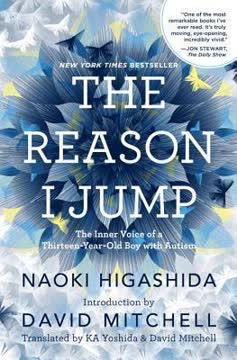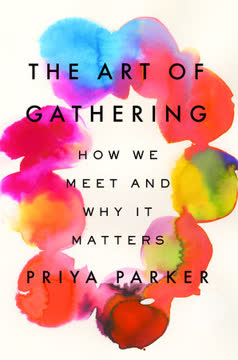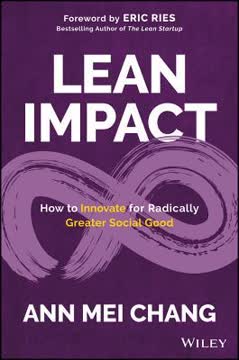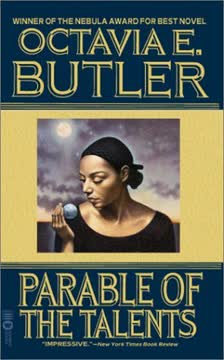Key Takeaways
1. Philanthropy is Personal, but Requires Clarity
Moving beyond this kind of reflexive giving begins with clarifying your values and beliefs.
Personal passion is the starting point. Philanthropy is inherently personal, driven by individual values, relationships, and a desire to "do one's share." However, this can lead to "reflexive giving"—supporting many causes without deep engagement or clear purpose. To maximize impact, donors must move beyond mere generosity to a disciplined consideration of what they truly care about.
Clarify your core values. This involves a personal journey of discovery, often through reflection, discussion with family and mentors, and learning from others. The book suggests anchoring priorities around broad categories:
- People: Helping specific groups (e.g., disadvantaged children, women and girls).
- Problems: Addressing specific issues (e.g., highway safety, disease cures).
- Places: Revitalizing or preserving specific geographies (e.g., Hawaiian language, downtown Los Angeles).
- Pathways: Believing in a particular approach (e.g., technology, mentoring).
- Philosophies: Promoting a worldview (e.g., open societies, economic principles).
Clarity prevents ambiguity. Without explicit values, philanthropic efforts can become diluted, leading to wasted resources and internal conflict, especially in foundations with multiple decision-makers. Clear values ensure that philanthropy remains aligned with the donor's intent, even as priorities evolve or leadership changes, making it possible for others to work effectively towards shared goals.
2. Define Success with Specificity
Getting clear about what will constitute success for a given grant or initiative involves translating the win you envision for society into some real-world result or outcome (like the ones described above) that can inform decisions about how and where to allocate precious resources most effectively.
Move beyond vague aspirations. Many philanthropists aim to "cure cancer" or "end poverty," but such broad visions are too vast for any single entity and too ambiguous to guide resource allocation. Effective philanthropy requires translating these aspirations into specific, high-level outcomes that can drive decisions and trade-offs. For example, instead of "reversing global warming," aim for "passage of federal cap-and-trade legislation."
Specificity guides action. A good definition of success must be specific enough to guide funding decisions, allowing you to determine what is in or out of bounds for an initiative. It should also enable you to gauge progress over time. Clarence Day, for instance, focused on helping older teenagers aging out of foster care, defining success by their ability to transition to adulthood with support for housing, employment, and education.
Three criteria for success. A workable definition of success should:
- Reflect the philanthropist's values and beliefs.
- Be specific enough to guide funding decisions and trade-offs.
- Allow for the measurement of progress or its absence.
This clarity helps avoid "fuzzy headedness" and ensures that efforts are directed towards tangible, achievable results.
3. Develop a Feasible Theory of Change
Put simply, a theory of change starts with the change in the world you want to see and works backward to lay out everything you think will need to happen to bring it about.
Map out the path to impact. A theory of change articulates the sequence of activities and events necessary to achieve your defined success. It identifies key players, their roles, and the underlying assumptions about how they will behave. This framework helps distinguish feasible strategies from mere "wishful thinking" and forces a confrontation with reality.
Test assumptions and scope the terrain. Philanthropists must rigorously test their assumptions, as many common beliefs (e.g., successful pilot programs automatically scale) are often flawed. "Scoping the terrain" involves gathering information on:
- How beneficiaries understand the issue.
- Other active players and their strategies.
- What works and what doesn't.
- Expert opinions and past lessons.
- The ripeness of the issue for intervention.
This research helps identify opportunities, avoid reinvention, and adapt to setbacks, as seen with the Michael J. Fox Foundation's focus on drug-development pipeline gaps.
Examples of effective theories of change. The Draper Richards Kaplan Foundation's theory is that "dedicated, talented leadership is the essence of social change," leading them to back social entrepreneurs. The Barbara Lee Family Foundation focuses on "helping women get elected" to strengthen democracy. These examples show how a clear theory of change, even with limited resources, can translate expansive aspirations into bounded, realistic strategies.
4. Embrace Self-Imposed Accountability
Unless you demand outstanding performance from yourself, no one else will demand it of you.
Excellence is self-imposed. Unlike businesses or governments, philanthropy lacks inherent market dynamics or external accountability to drive continuous improvement. This "terrible truth" means donors must proactively set high standards for themselves and hold themselves accountable for achieving results, not just for their grantees.
Commit your full resources. Accountability extends beyond financial contributions to include your time and influence (skills, expertise, networks). Every new commitment requires trade-offs across your philanthropic portfolio. It's crucial to be brutally honest about what you are able and willing to deploy, considering personal preferences, time frames, and risk tolerance.
Confront risks explicitly. Philanthropists must consider three types of risk:
- Strategic risk: The chance that efforts yield no results or unintended harm.
- Secondary risk: Unforeseen negative consequences for others, even if your plan succeeds.
- Personal risk: Disappointment or damage to reputation if philanthropy fails to satisfy.
Candidly assessing these risks helps avoid "blind confidence" and ensures that commitments align with what you are truly prepared to undertake.
5. Build Right Capacity for Execution
The most elegant strategy is useless if it can’t be implemented effectively.
Execution is where strategy becomes real. Achieving impact requires disciplined execution, which hinges on having the "right people, right processes, and right costs" for both your philanthropic entity and your grantees. This means employing competent staff, developing smart decision-making processes, and ensuring a sustainable financial model.
Staffing for impact. Finding the "right people" in philanthropy is challenging due to specialized skill sets and a smaller talent pool. Donors must prioritize trust, shared values, and the specific job requirements, deciding whether they need a partner, a strong right hand, a generalist, or a specialist. Hiring the "wrong who" can lead to internal conflict and undermine effectiveness, as seen in the cautionary tale of Walter Connors.
Address the "nonprofit starvation cycle." Many nonprofits are "built to break" due to unrealistic funder expectations about overhead. Donors often undervalue "good overhead" like strong management, IT systems, or a CFO, which are crucial for sustained performance and growth. Supporting capacity building, as the Edna McConnell Clark Foundation does, is essential for grantees to deliver better results and avoid being "undermanaged."
6. Cultivate True Grantee Partnerships
Your single most important job is choosing your grantees wisely, then doing everything you can to help them deliver the best possible results.
Beyond mere funding. While donors provide essential capital, their most critical role is fostering genuine partnerships with grantees. This means moving beyond a transactional relationship to one characterized by mutual respect, clear communication, and shared strategic alignment, despite the inherent power imbalance.
Rigorous selection and due diligence. Choosing the right grantees is paramount. This involves:
- Sourcing: Expanding the pool of candidates through relationships, research, expert opinions, and requests.
- Due Diligence: Thoroughly assessing a prospect's capacity to deliver results, both programmatically and organizationally. This process should be proportional to the grant's magnitude and context, avoiding "infatuation" over facts.
- Realism: Acknowledging and addressing organizational deficiencies, and being willing to fund capacity building.
Avoid strategic disruption and high cost of capital. Donors can unwittingly impose a high "cost of capital" on grantees through excessive reporting, unrealistic demands, or forcing misaligned strategies. This "strategic disruption" can derail a nonprofit's mission and waste resources. Instead, foster a shared definition of success, where both parties are clear on goals and roles, and the donor acts as a coach, not a controller, as exemplified by Elaine Wynn's partnership with Communities in Schools.
7. Prioritize Continuous Learning and Improvement
“Am I getting better?” is a question about continuous improvement, not the status quo.
Learning fuels progress. Getting better in philanthropy, like any endeavor, requires continuous learning. This means actively seeking information that informs smarter decisions about strategy and execution, rather than passively accepting "satisfactory underperformance." Learning compounds, leading to higher returns for society over time.
Measurement for learning, not just scorekeeping. Effective measurement serves three purposes:
- Accountability: Tracking what happened (backward-looking).
- Continuous Improvement: Diagnosing strengths and weaknesses to adapt and innovate (forward-looking).
- Proof of Impact: Ascertaining causality for specific program changes (e.g., through randomized controlled trials).
The most useful measures are strategic, situational, and actionable, helping both donor and grantee make better decisions.
Embrace truth-telling and learn from failure. Philanthropy often suffers from a lack of candid feedback, as grantees fear jeopardizing funding and donors prefer good news. Donors must actively cultivate "truth tellers" on their boards, staff, and among grantees, creating a culture where problems are discussed openly. Learning from "failures" (which are often just course corrections) is crucial for innovation and progress, as demonstrated by the Gill Foundation's adaptation of its hate crime strategy.
8. Leverage Beyond Money
Just as equity investments can be leveraged by debt in the financial world, philanthropic dollars can be leveraged by nonfinancial contributions in the world of philanthropy.
Money is a commodity, influence is power. While financial resources are fundamental, private wealth alone pales in comparison to societal needs. Maximizing impact requires defining resources broadly to include nonfinancial contributions: your time and your influence. These intangible assets—skills, expertise, reputation, and personal/professional networks—can significantly amplify philanthropic efforts.
Strategic deployment of time and influence. How you allocate your time is a critical strategic decision. This can range from hands-on engagement (like Peter Lynch's deep involvement with his foundation) to leveraging intermediaries (like Josh Bekenstein with New Profit). Influence can be used to:
- Convene: Bring key stakeholders together (e.g., Rockefeller Foundation post-Katrina).
- Advocate: Promote policies or causes (e.g., Albert and Mary Lasker for medical research).
- Connect: Introduce grantees to other funders or board members.
- Provide Expertise: Offer coaching, strategic planning, or technology insights (e.g., Jean Case with Network for Good).
Innovative financial approaches. Beyond traditional grants, donors can aggregate capital with others (e.g., Edna McConnell Clark Foundation's Growth Capital Aggregation Pilot, ClimateWorks) or use "mission-related investing." This includes program-related investments, loan guarantees, or equity investments in socially oriented businesses, blurring the lines between philanthropy and investing to achieve both social and financial returns, as exemplified by Omidyar Network.
9. Beware of Philanthropy's Traps
Ignorance is the paramount philanthropic sin. Arrogance is its twin.
Philanthropy's "terrible truths" and "traps for the unwary" undermine impact. The book highlights inherent challenges that can lead to underperformance:
- All philanthropy is personal: Leading to "reflexive giving" without clear purpose.
- Results can confound: Making it hard to pin down impact and leading to ambiguous feedback.
- Excellence is self-imposed: Without external pressure, complacency can set in.
Common pitfalls to avoid:
- Fuzzy headedness: Allowing emotions and wishful thinking to override logic, leading to undefined goals (e.g., "curing cancer").
- Flying solo: Assuming one can achieve grand ambitions unilaterally, neglecting collaboration with other players.
- Underestimating and underinvesting: Chronically underestimating costs and capacity needed to deliver results (e.g., the Annenberg Challenge's vague goals and insufficient support).
- Nonprofit neglect: Resisting general operating support and imposing excessive "cost of capital" on grantees.
- Satisfactory underperformance: Accepting "good enough" without pushing for continuous improvement.
Confronting these traps requires discipline. Donors must resist natural human tendencies like infatuation with ideas or leaders, and the comfort of positive feedback. Instead, they should embrace humility, seek candid "truth tellers," and learn from mistakes to ensure their philanthropy genuinely makes a significant difference in the world.
Last updated:
Review Summary
Give Smart receives mixed reviews, with an average rating of 3.60 out of 5. Readers appreciate its insights on strategic philanthropy, particularly for wealthy donors and foundation executives. Many find it helpful for understanding effective giving and improving philanthropic impact. However, some criticize its narrow focus on high-level donors, repetitiveness, and lack of broader applicability. Positive reviewers praise its practical advice, case studies, and framework for thoughtful giving. Critics note it may not be as relevant for individual donors or those seeking personal philanthropy guidance.
Similar Books










Download PDF
Download EPUB
.epub digital book format is ideal for reading ebooks on phones, tablets, and e-readers.





